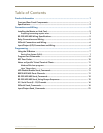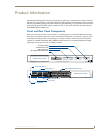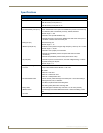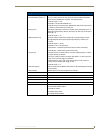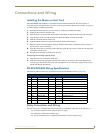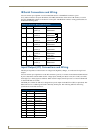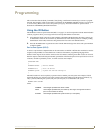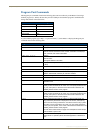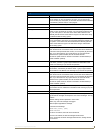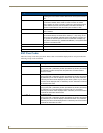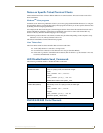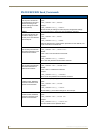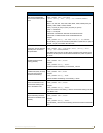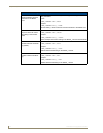
Programming
7
NXI NetLinx Integrated Controller
Programming
This section describes the Send_Commands, Send_Strings, and Channel commands you can use to program
the NXI. The examples in this section require a declaration in the DEFINE_DEVICE section of your program
to work correctly. Refer to the NetLinx Programming Language instruction manual for specifics about
declarations and DEFINE_DEVICE information.
Using the ID Button
The ID Button on the rear panel of the NXI (FIG. 1 on page 1) is used in conjunction with the NetLinx Studio
software program to allow you to assign new Device and System numbers for the NXI.
1. Using NetLinx Studio, place the system in Identity (ID) Mode. ID Mode means the entire system is put
on hold while it waits for an event from any NetLinx device in the named system (for example, pushing
the ID button on the NXI). The device that generates the first event is the identified device.
2. Press the ID Mode button to generate an event from the NXI and assign new device and system numbers
in NetLinx Studio.
Device:Port:System (D:P:S)
A device is any hardware component that can be connected to an AXlink or ICSNet bus. Each device must be
assigned a unique number to locate that device on the bus. The NetLinx programming language allows
numbers in the range 0-32,767. Device 0 refers to the local master; numbers greater than 32,767 are reserved.
NetLinx requires a Device:Port:System (D:P:S) specification. This D:P:S triplet can be expressed as a series of
constants, variables separated by colons, or a DEV structure. For example:
STRUCTURE DEV
{
INTEGER Number // Device number
INTEGER Port // Port on device
INTEGER System // System the device belongs to
}
The D:P:S notation is used to explicitly represent a device number, port and system. For example, 128:1:0
represents the first port on device 128 on this system. If the system and Port specifications are omitted, (e.g.
128), system 0 (indicating this system) and port 1 (the first port) is assumed. Here's the syntax:
NUMBER:PORT:SYSTEM
where:
NUMBER: 16-bit integer represents the device number
PORT: 16-bit integer represents the port number (in the range 1 through the number of
ports on the Controller or device)
SYSTEM: 16-bit integer represents the system number (0 = this system)



